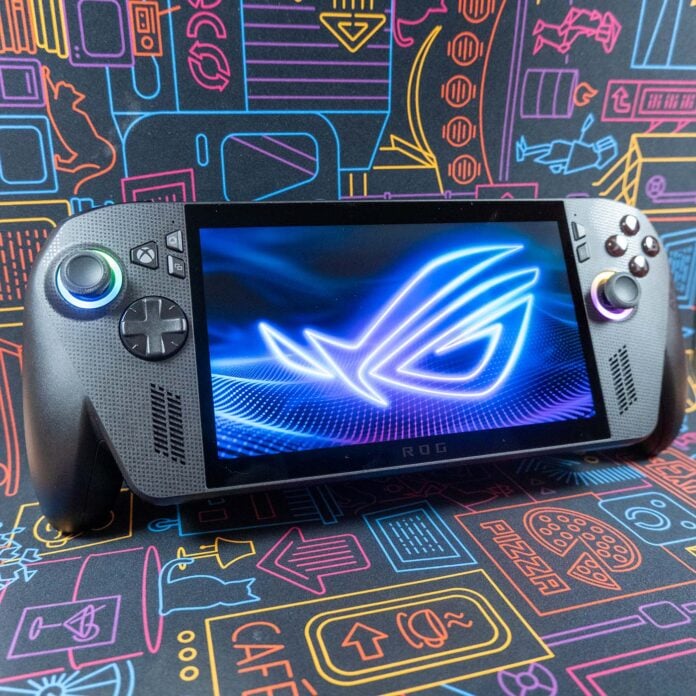It’s taken almost a year, but Ryzen Z2 processors are finally finding their way into handheld gaming PCs. Asus ROG Xbox Ally X is undoubtedly the most interesting of all, pairing bleeding-edge flagship hardware with long overdue forward-thinking software.
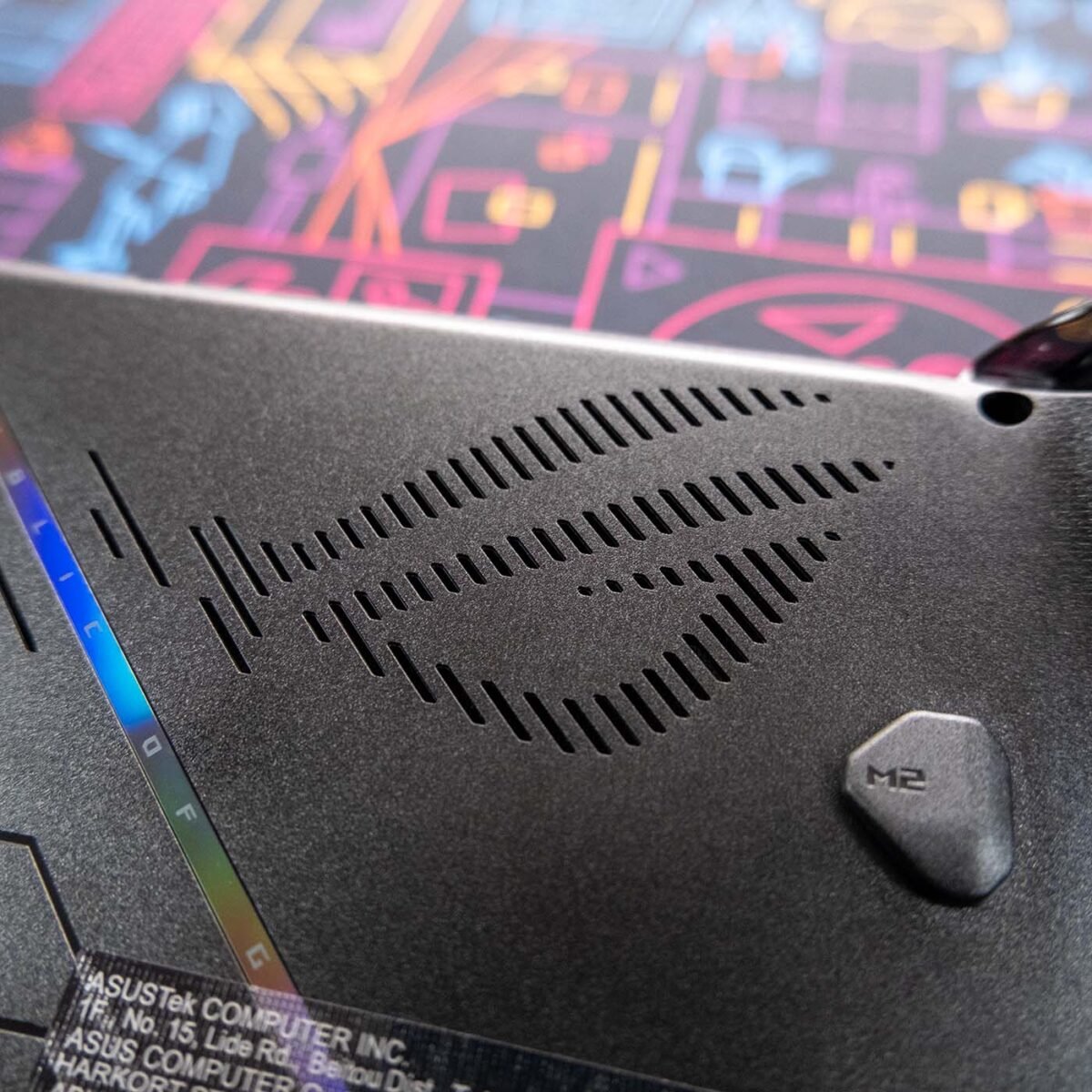

ROG Xbox Ally X
£800 / $1,000
Pros
- Excellent APU performance
- Best-in-class software experience
- Comfortable, high-quality build
- Solid battery life
- Cheapest Z2 Extreme handheld
Cons
- Lacks hall-effect thumbsticks
- No carry case included
- Expensive as handhelds go
Club386 may earn an affiliate commission when you purchase products through links on our site.
How we test and review products.
Before we get into the meat of this review, I must address Microsoft’s brazen use of its Xbox brand. ROG Xbox Ally X isn’t any more an Xbox than any other Windows handhelds. This is a handheld PC, not an Xbox, plain and simple.
Now we’re all on the same page, let’s explore what makes ROG Xbox Ally X nothing short of the new ruler of the handheld roost.
Specs
Shiny and new inside ROG Xbox Ally X is Ryzen AI Z2 Extreme. This APU sports Radeon 890M integrated graphics, and a collection of eight (3+5) Zen 5 and Zen 5c cores. There’s no better chip for handheld PCs as far as AMD is concerned.
| Asus ROG Xbox Ally X | |
|---|---|
| CPU | AMD Ryzen AI Z2 Extreme |
| GPU | AMD Radeon 890M |
| RAM | 24GB LPDDR5X-8,000 |
| Storage | 1TB PCIe Gen 4 SSD |
| Battery | 80WHr |
| Display | 7in IPS (1920×1080 / 120Hz) |
| Speakers | Yes |
| Connectivity | 3.5mm Mic-in/Headphone-out (x1) Bluetooth 5.2 microSD card reader (x1) USB-C 20Gb, w/ DP Alt & PD (x1) USB-C 40Gb, w/ DP Alt & PD (x1) WiFi 6E |
| OS | Windows 11 Home |
| Weight | 715g |
| Dimensions | 290 (W) x 121 (D) x 28mm (H) |
| Extras | 65W charger Fingerprint reader |
| Price | £800 / $1,000 |
Asus equips this system with 24GB of LPDDR5X-8000. Both CPU and GPU share the memory pool, at a default ratio of 16GB and 8GB, respectively. It’s possible to tweak this balance via software but there’s no real need to do so.
These specifications aren’t a massive departure from the capabilities of prior-generation AMD handheld SoCs. However, this new chip does deliver performance gains and improved efficiency.
ROG Xbox Ally X uses the same screen as all other Asus handhelds that came before. This is no bad thing, as the display still holds up to present standards despite its age.
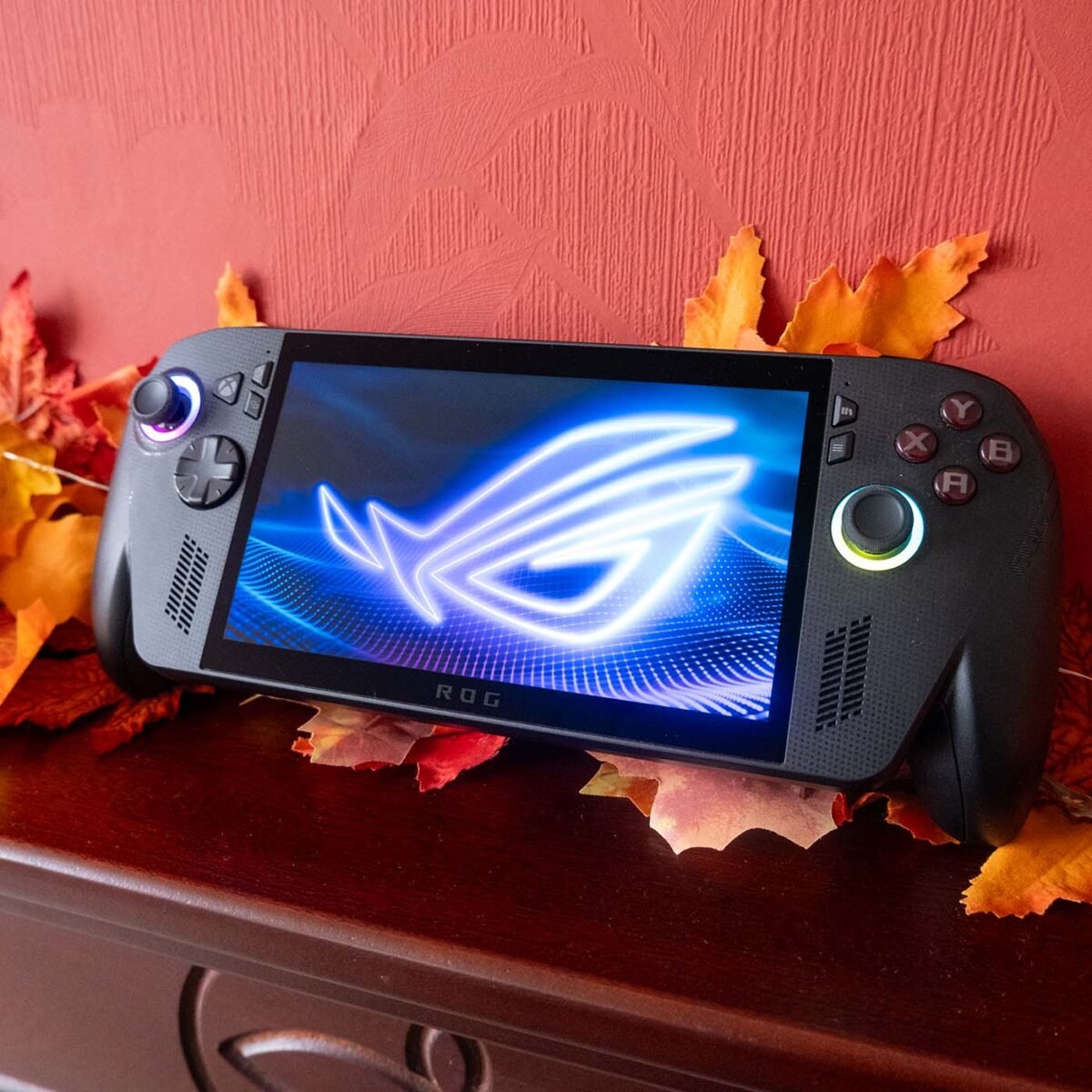
Measuring 7in across, this IPS panel sports a native 1080p resolution and 120Hz variable refresh rate (VRR). This is a fine configuration by any measure that more than befits the capabilities of the system and delivers a great gaming experience.
While I’d welcome a future OLED variant, sticking with this backlit panel does net a welcome 500-nit peak brightness that would be impossible via a self-emissive alternative. This makes enjoying the handheld easier in brighter environments and gives content a little extra pop too.
All the same, I’d love to see a larger, taller screen adorn a successor. The top and bottom bezels are particularly noticeable having come from the 16:10 panels of other handhelds like Steam Deck OLED.
Design
In terms of size and weight, ROG Xbox Ally X is the largest and heaviest handheld Asus has ever made. However, this extra bulk hasn’t come at the expense of ergonomics.
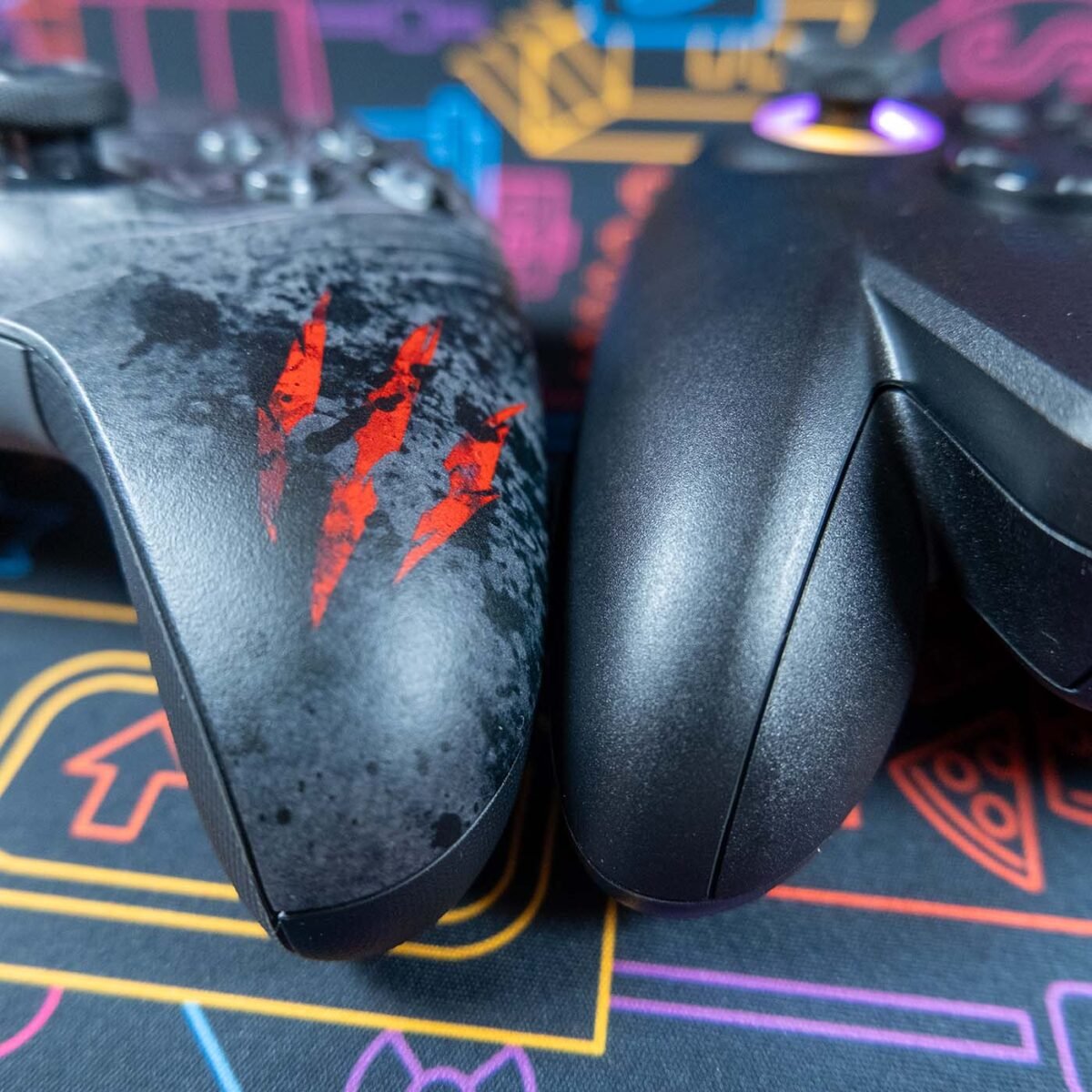
Even though the Xbox controller style grips either of the chassis still don’t look right to my eye, I can’t deny how comfortable they are in practice. It sounds trite but it really does feel like I’m holding an elongated gamepad.
Face buttons are all within easy reach and are satisfying to press, including the new ‘Xbox’ button which provides convenient access to the Game Bar overlay. The handheld’s new hall-effect triggers sadly don’t accompany hall effect thumbsticks but are larger and taller and feel all the better in the hand.
In spite of this otherwise great design, I’d like to have a stern word with whoever decided to move the ‘View’ and ‘Menu’ buttons below ‘Command Center’ and ‘Library.’ Their placement confusingly goes against years of muscle memory and established design, resulting in a fair share of frustrating accidental presses.
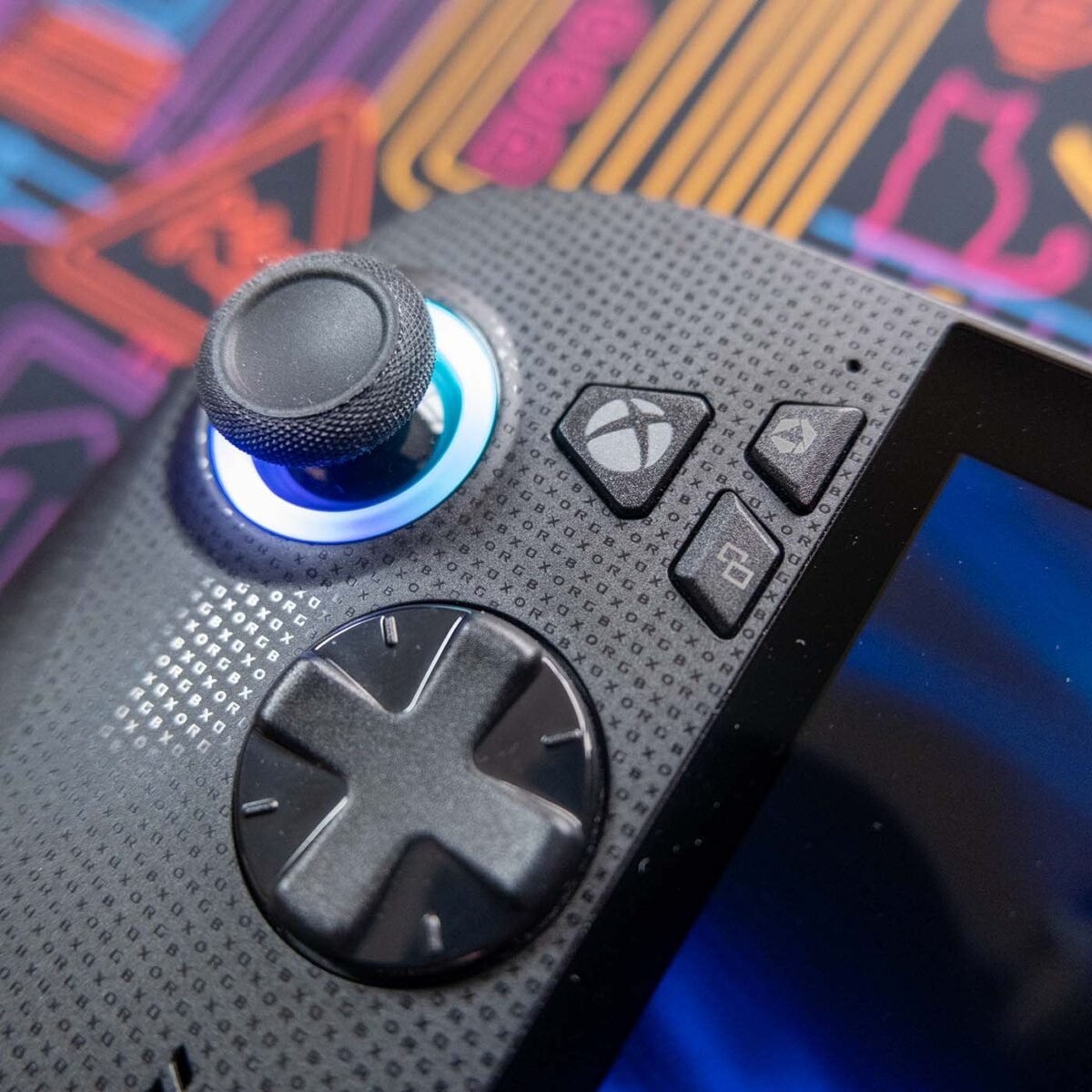
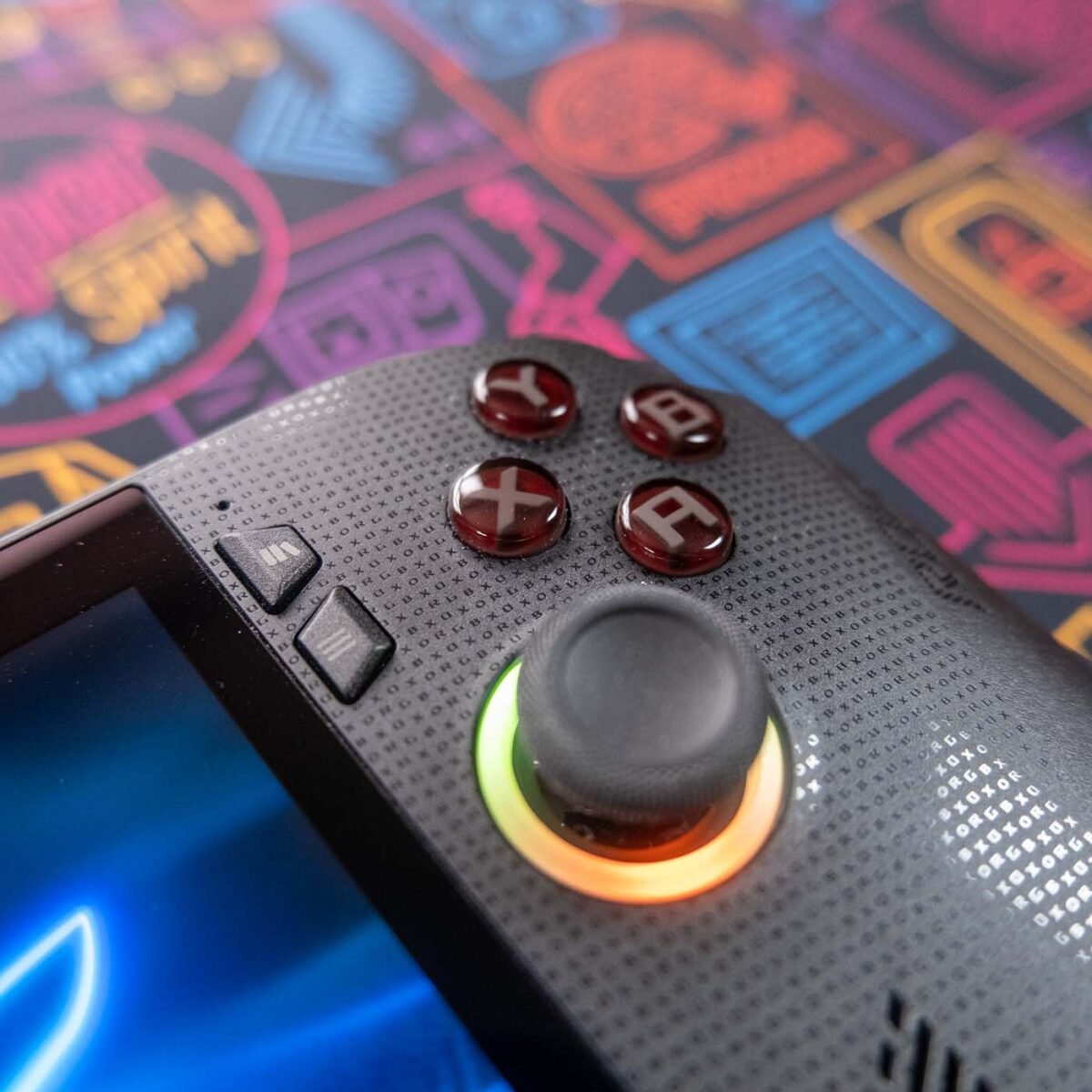
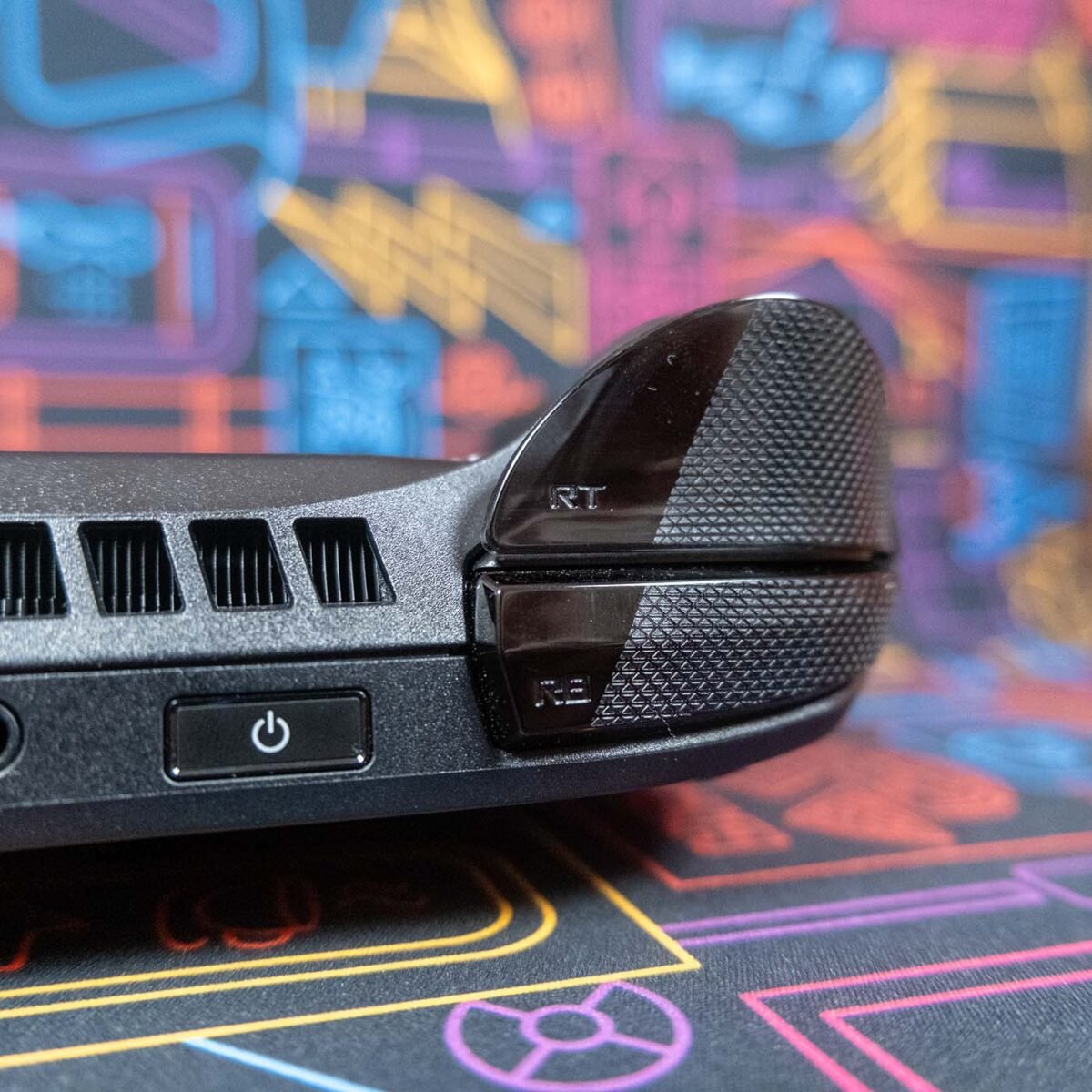
All of ROG Xbox Ally X’s ports live topside. Two USB-C ports – one 40Gb, the other 20Gb – serve as peripheral and power inputs. They each support DP Alt Mode, too.
Complementing the two USB-Cs is a 3.5mm combo audio jack and microSD card reader. As much as I don’t find much use for wired headphones these days, it’s always great to have the option.
Wireless connectivity isn’t bleeding edge but is suitably fast via WiFi 6E and Bluetooth 5.2. As per, I had no issue with either standard using my home network and accessories.
Finally, the power button doubles as a fingerprint sensor. I’ve grown to appreciate the conveniences of this feature, if only to save myself from mucking up the display via touchscreen inputs in the name of security.
Performance
Like other handhelds, ROG Xbox Ally X features a configurable TDP. The handheld runs at 17W by default, with 13W and 25W profiles available via toggles in the Command Center overlay. It’s also possible to push the device APU up to its 35W maximum, providing you have the 65W charger connected.
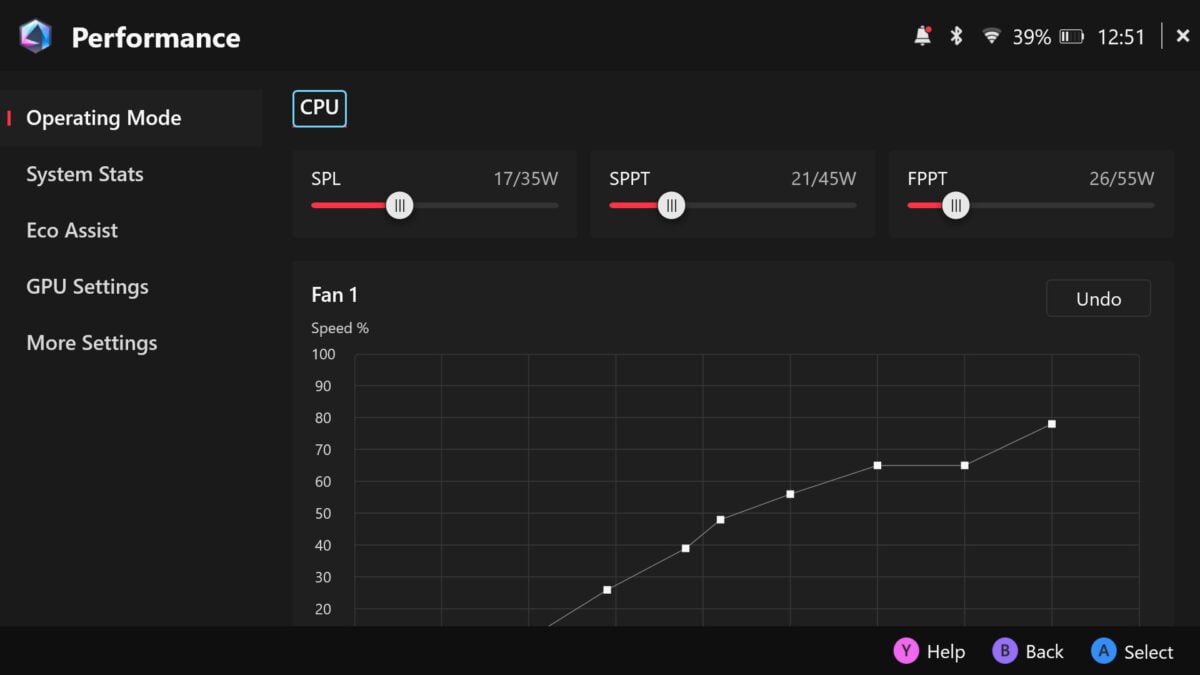
Fear not adventurous enthusiasts, SPL (Sustained Power Limit), SPPT (Slow Package Power Tracking), and FPPT (Fast Package Power Tracking) sliders make a return in service of custom power limits. Of course, these tweakable variables come complete with a fan curve editor, too.
Asus’s decision to clock Ryzen AI Z2 Extreme at 17W out of the box makes sense, as the TDP provides a suitable balance of efficiency and performance. However, it’s a far cry from AMD’s 28W default, and further still from the chip’s 35W maximum.
As such, ROG Xbox Ally X has more performance under the hood than some users may otherwise realise. To showcase how much more proverbial juice there is to squeeze out of the underlying hardware, I’ve benchmarked the system at 17W, 25W, and 35W.
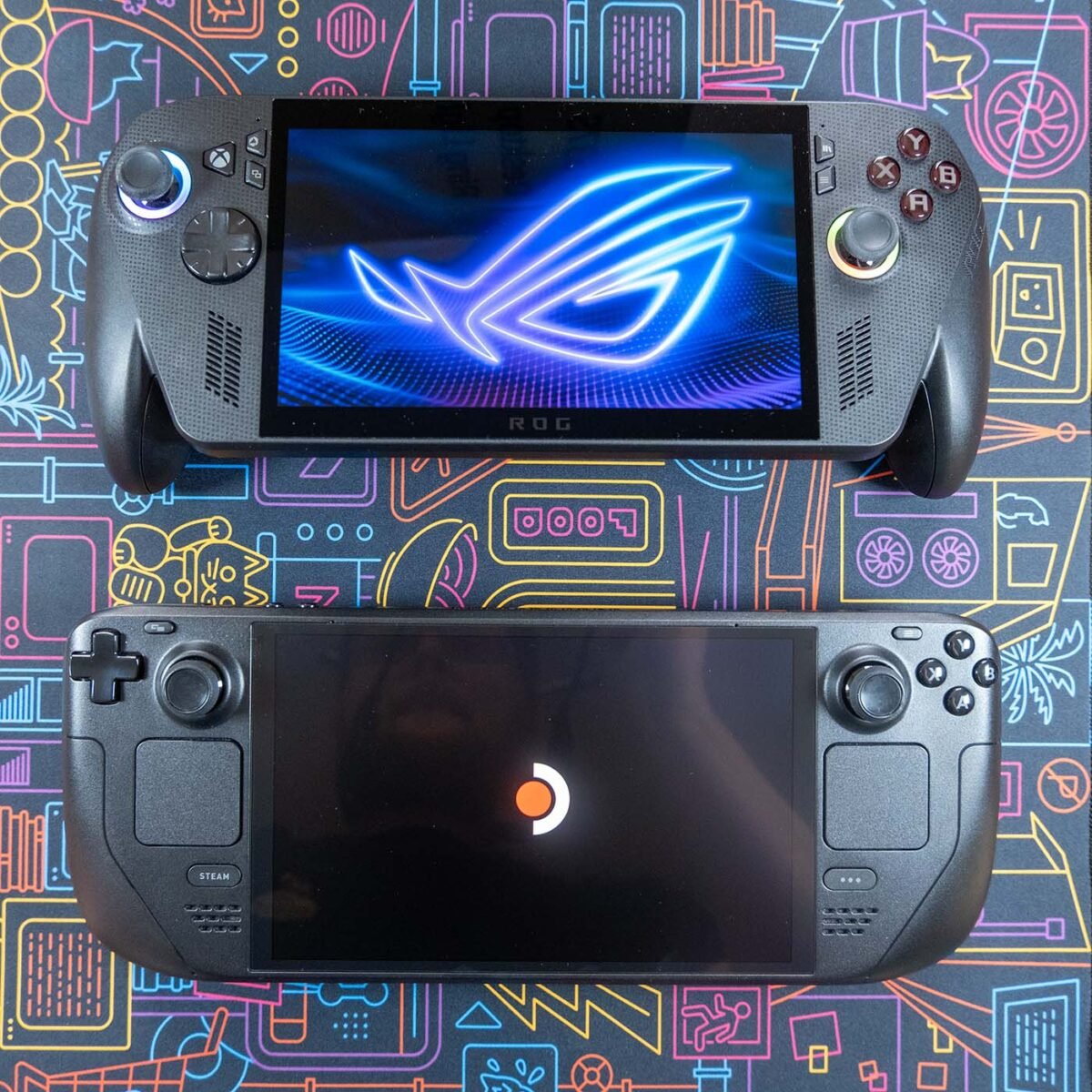
I’m comparing the handheld to its predecessor, ROG Ally X, as well as the Intel-powered Claw 8 AI+, and the ever-popular Steam Deck OLED. Note that the latter two systems sport FHD+ (1200p) displays, while both of Asus’s offerings run at FHD (1080p).
Cyberpunk 2077
Beginning the benchmark run with Cyberpunk 2077, I’m using the game’s ‘Steam Deck’ preset sans FSR. While there’s no issue in using the upscaler, I’m eager to explore how the raw performance of each system stacks up.
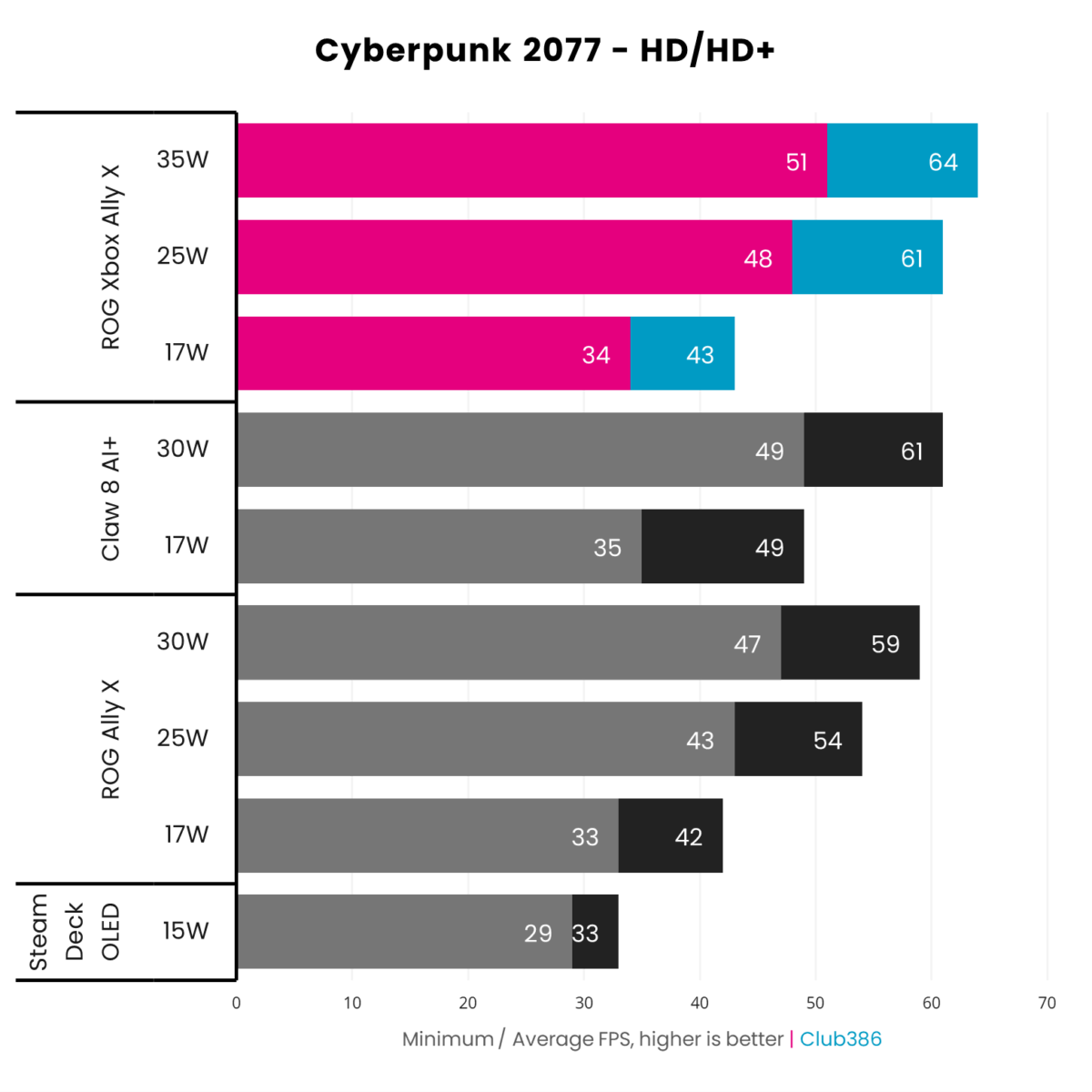
At HD/HD+ resolution, ROG Xbox Ally X is disappointingly within margin of error of mirroring ROG Ally X performance at 17W. Meanwhile, Claw 8 AI+ pulls ahead with a 6fps lead at the same TDP.
Shift up to 25W and the tables turn. Those extra watts go a long way, pushing Asus’s new champion 7fps ahead of the previous top dog.
There’s some impressive efficiency on show here, too. At 25W the Ryzen AI Z2 Extreme handheld matches Claw 8 AI+ and pips past ROG Ally X each running at 30W. With a 61fps average, the system also nearly doubles Steam Deck OLED performance.
Cranking all the way to 35W doesn’t push frame rates much higher. Still, this TDP does net ROG Xbox Ally X bragging rights with the absolute highest level of performance.
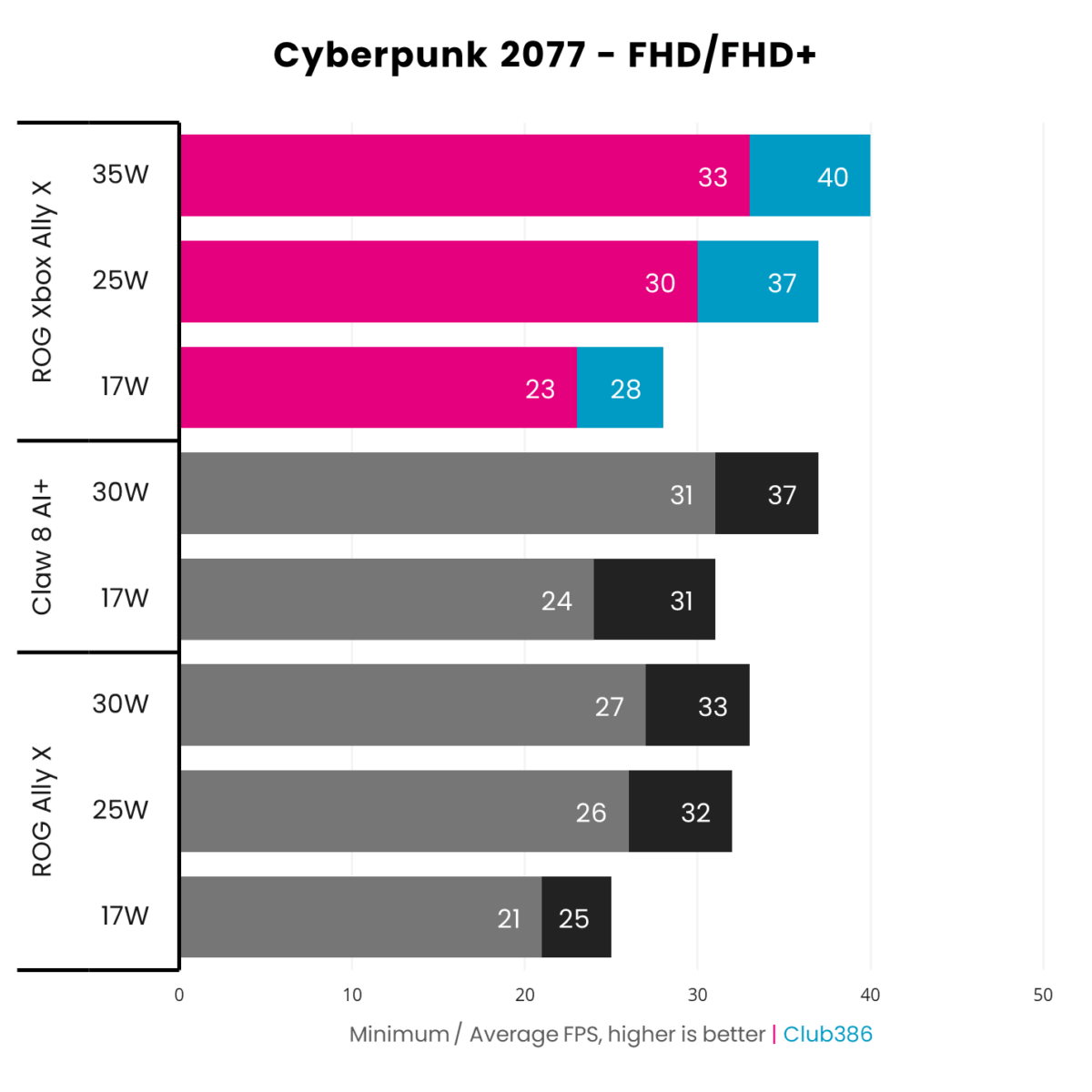
There’s no place for Steam Deck OLED in this FHD/FHD+ chart, nor subsequent ones, owing to the system’s ceiling of 800p. Not that Valve’s custom Zen 2/RDNA 2 APU would be able to handle the pressure of this resolution in this demanding a game anyway.
The increased pressures on the remaining handheld GPUs result in narrower leads across the board. Claw 8 AI+ continues to reign as the 17W champion but only surpasses ROG Xbox Ally X by 3fps, while ROG Ally X falls behind by 6fps.
Switching to 25W and 35W sees a repeat of HD/HD+ results at the same TDP. It’s great to see a consistent 30fps+ experience in this game using the smaller of the two profiles.
Forza Horizon 5
It takes some work but it’s not impossible to make full use out of the high refresh rate panels that come part and parcel with most handhelds. Indie games like Balatro will fly at 120fps+, but there are more fast-paced experiences out there that will perform similarly such as Forza Horizon 5.
Using the racing game’s ‘Low’ preset, even Steam Deck OLED can his 60fps+. So, how much further can modern silicon rev up the frame rate?
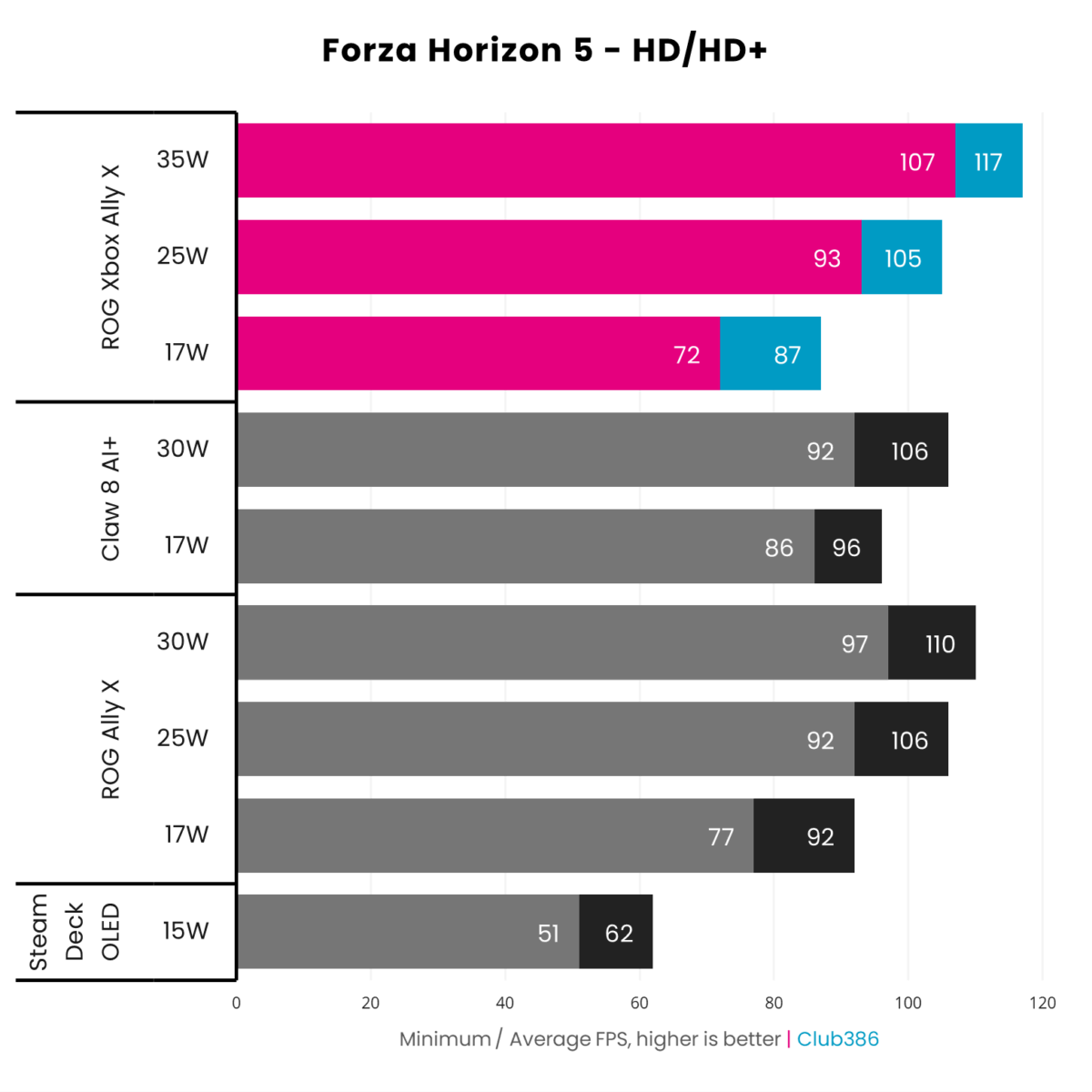
Both ROG handhelds and Claw 8 AI+ are considerably faster than Valve’s handheld. We’re talking 40% improvements in terms of average frame rates at the very least.
Curiously, ROG Xbox Ally X is repeatably slower than its predecessor at 17W. There’s no obvious cause for this, but the newcomer’s GPU clocks are consistently lower at this TDP while CPU usage is higher.
Shifting gears to 25W puts all contenders in a dead heat with 105-106fps averages. However, 35W is just the turbo Ryzen AI Z2 Extreme needs to race ahead at 117fps.
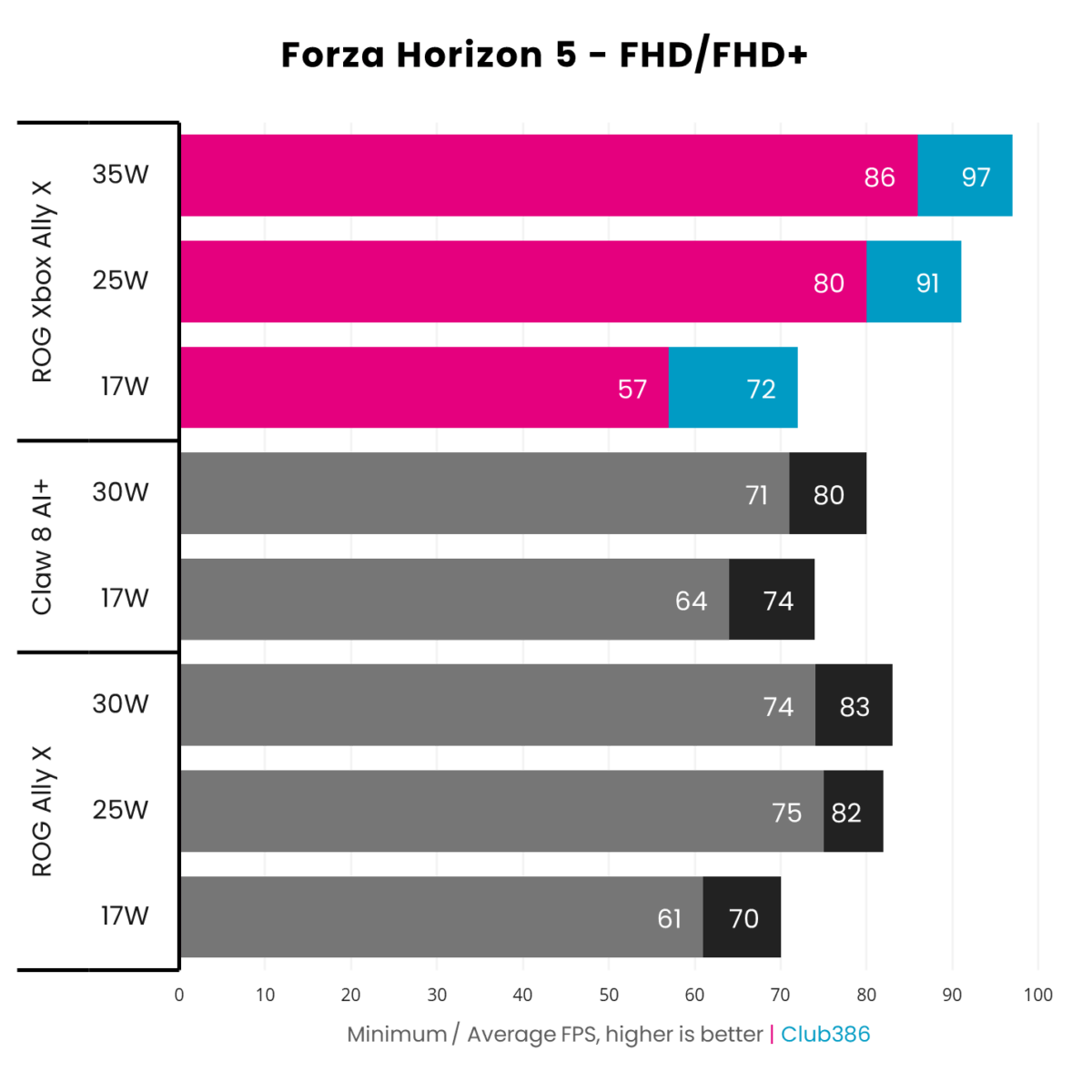
The high frame rate fun continues even at FHD. It’s in this benchmark that ROG Xbox Ally X enjoys its largest leads.
The race between handhelds at 17W is close to a photo finish. However, Asus’s latest system emerges the clear winner at higher TDPs.
At 25W, first place crosses the finish line with a confident 9fps lead. 35W increases this advantage to a whopping 14fps.
Doom: The Dark Ages
Now comes the most difficult task, ray tracing in Doom: The Dark Ages. This FPS has proven too heavy for Steam Deck OLED and Claw 8 AI+ in the past, but both ROG handhelds rise to this hellish challenge to an admirable extent.
Make no mistake, running this game at the lowest graphics preset is a tough task for mobile devices. I have enabled Variable Rate Shading (VRS) for a small helping hand, but the feature only affords a frame or two of breathing room at most.
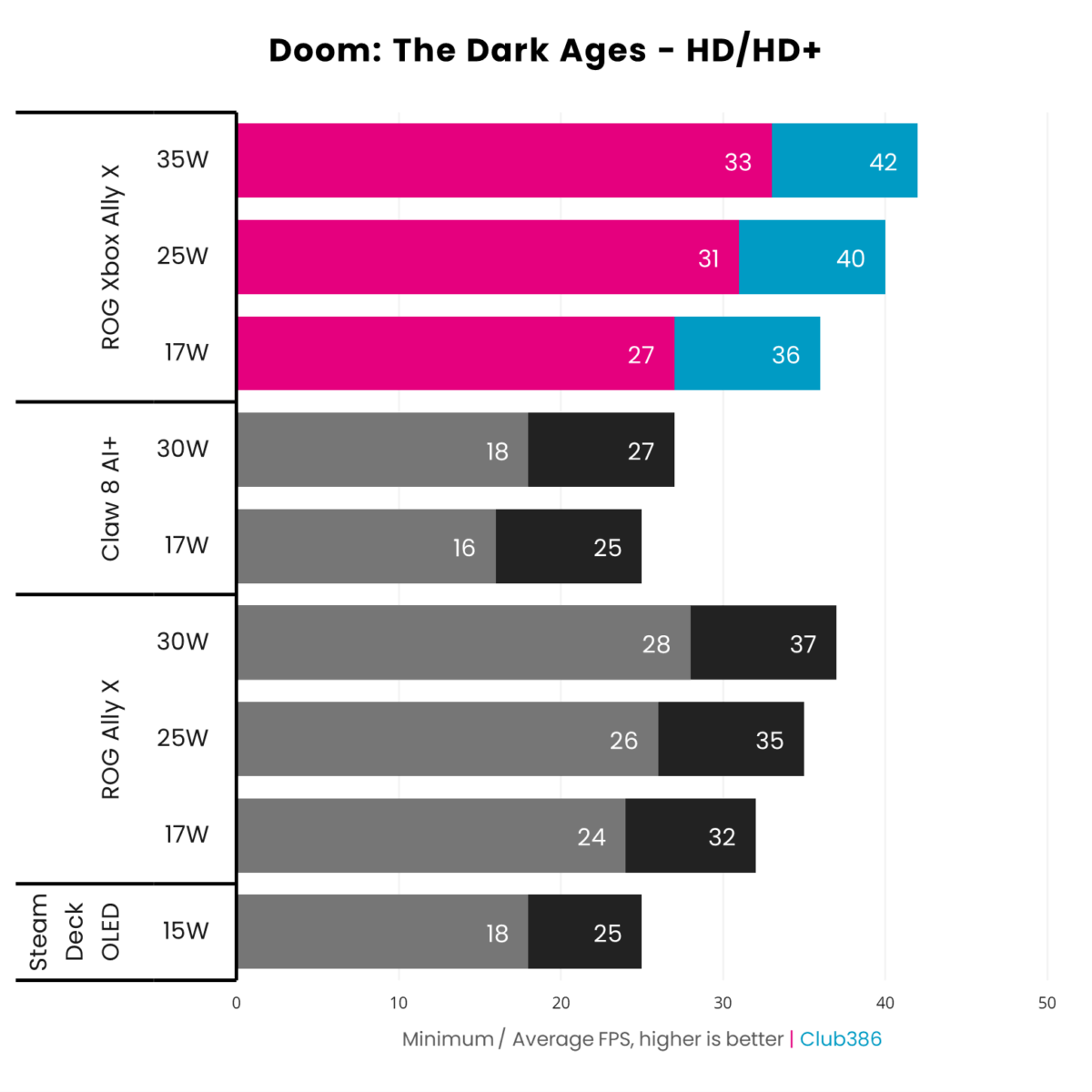
At HD, ROG Xbox Ally X leads the way across all TDPs. Even at 17W, the system is thrashing Claw 8 AI+ and achieves a decent 4fps lead over ROG Ally X.
It’s at 25W that the party really starts with a consistent 30fps+ experience. While I’d prefer double that for Doom Slayer’s latest venture, these frame rates remain impressive.
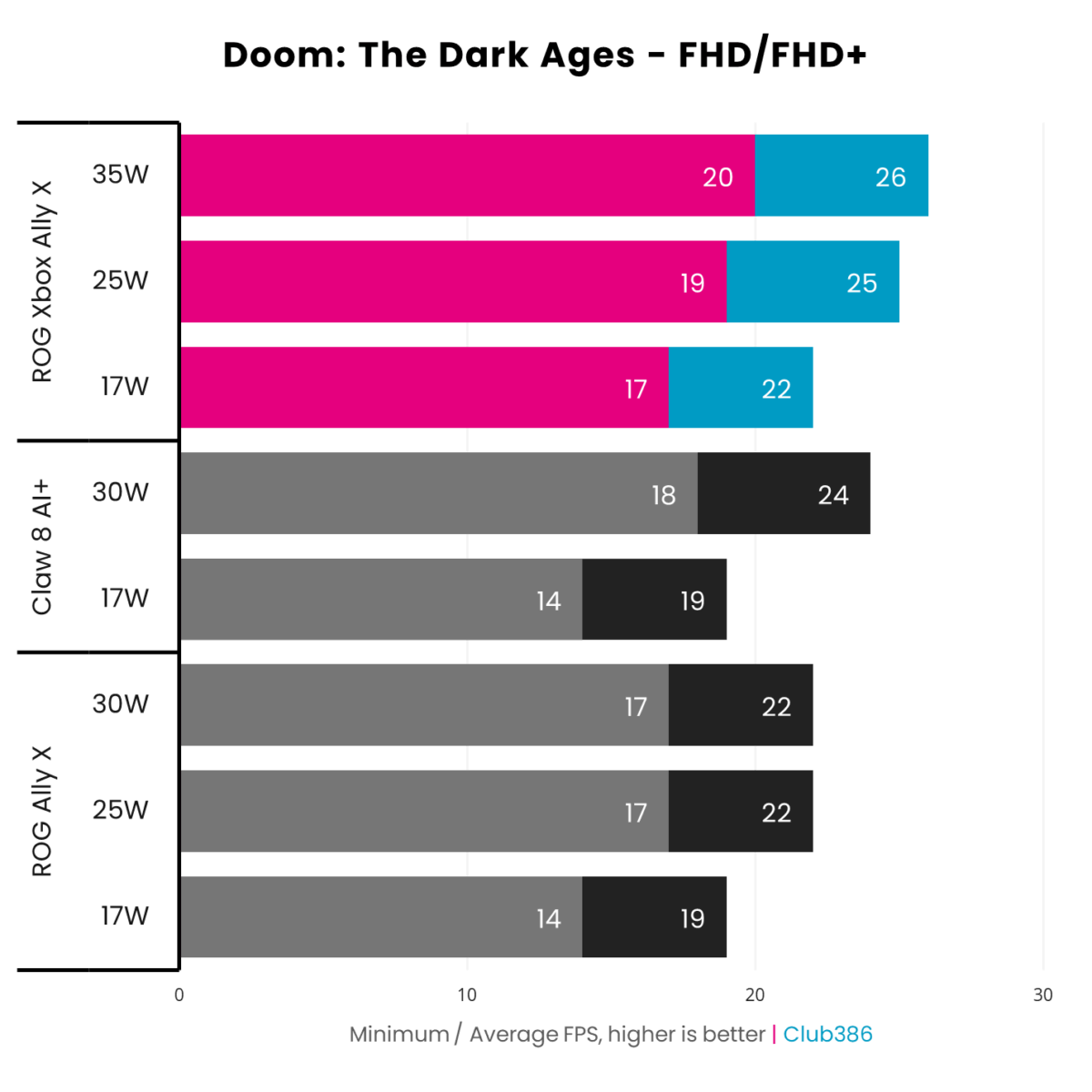
Unfortunately, native FHD proves too much for every handheld. ROG Xbox Ally X comes closest to hitting a 30fps average but the system’s average frame rates fall short by 4fps.
This doesn’t mean Doom: The Dark Ages is out of reach for this handheld. With the helping hand of XeSS ‘Quality’ upscaling at 25W, the game runs at a welcome 30-38fps.
I’d love to champion FSR 4 in this case, but Ryzen AI Z2 Extreme’s RDNA 3.5 graphics are officially incompatible with the feature. Unofficially, there are mods out there that will open up the upscaler to this handheld in lieu of support from AMD.
Software
The advent of ROG Xbox Ally X marks the beginning of a hopeful new chapter for Windows 11 on handhelds. Following years of criticism and unflattering comparisons to SteamOS, Microsoft is finally responding with the ‘Xbox Full Screen Experience.’
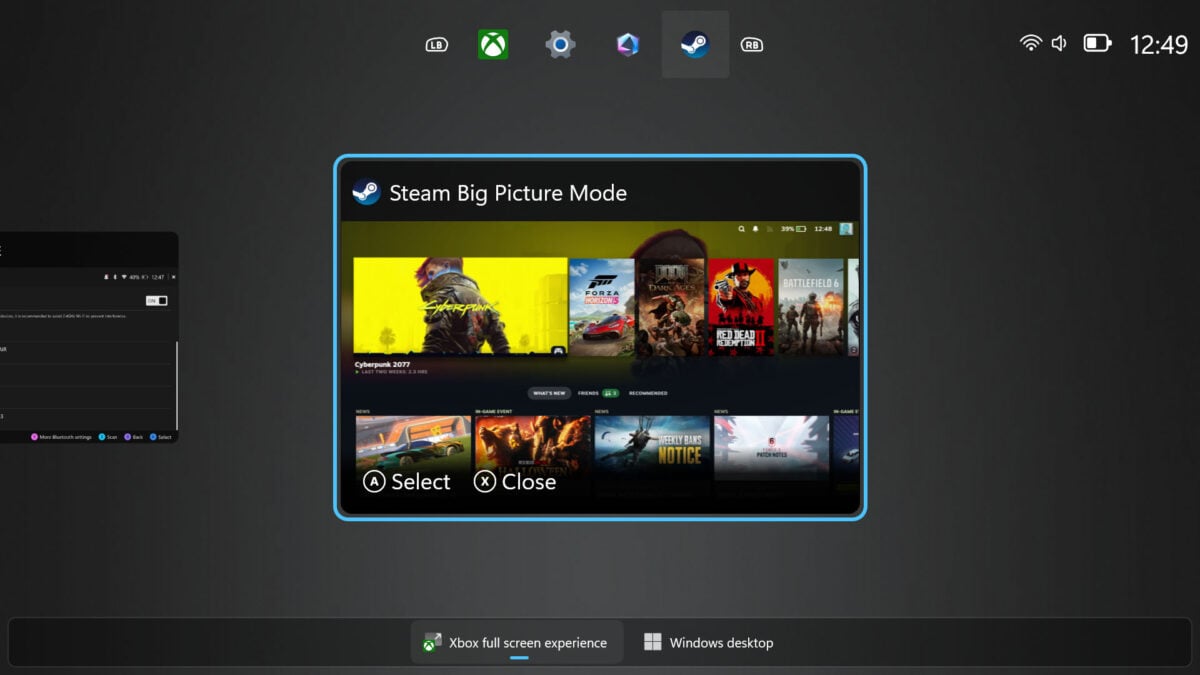
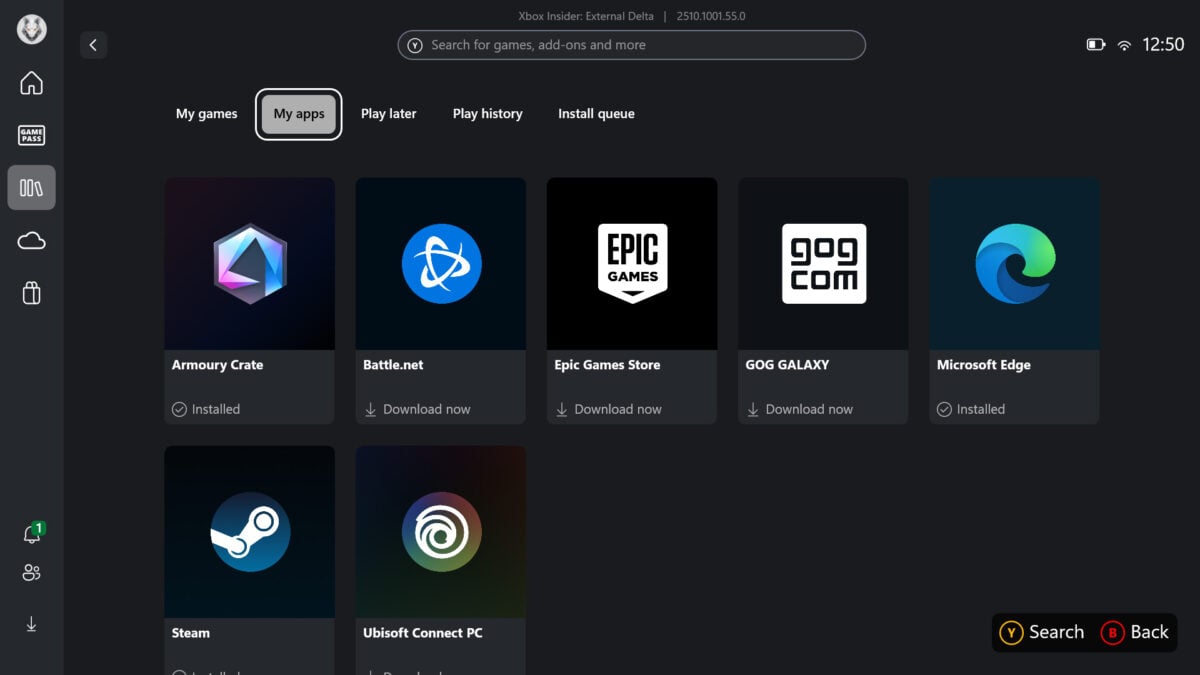
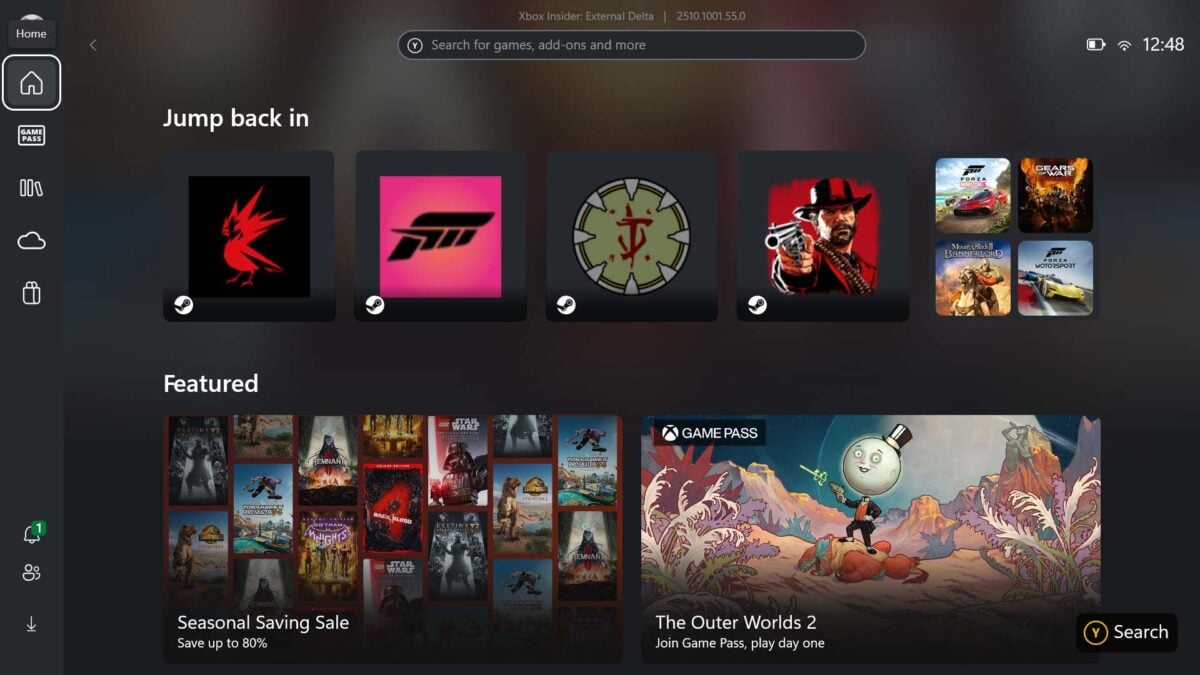
This is still Windows 11 at the core but the operating system runs with fewer background processes, freeing up system resources. The focus here is delivering the best handheld gaming experience above all, complete with controller-centric UI. Where we’re going we don’t need Start menus.
For greater context, ROG Xbox Ally X boots with 85 background processes running in the Xbox Full Screen Experience, gobbling up 5GB of RAM. Switching to Windows Desktop adds another 10 apps on to the pile, increasing memory usage to 6GB. It’s not a massive swing, but every optimisation is welcome.
The Xbox app serves as the handheld’s gaming hub, providing shortcuts to games across all storefronts. It’s clear that Microsoft wants you to stick to the Xbox ecosystem as much as possible, but the company doesn’t shy away from providing easy to access installers for the likes of Battle.net, Epic Games Store, and more. It’s an extremely convenient setup that I wish Valve would emulate on Steam Deck.
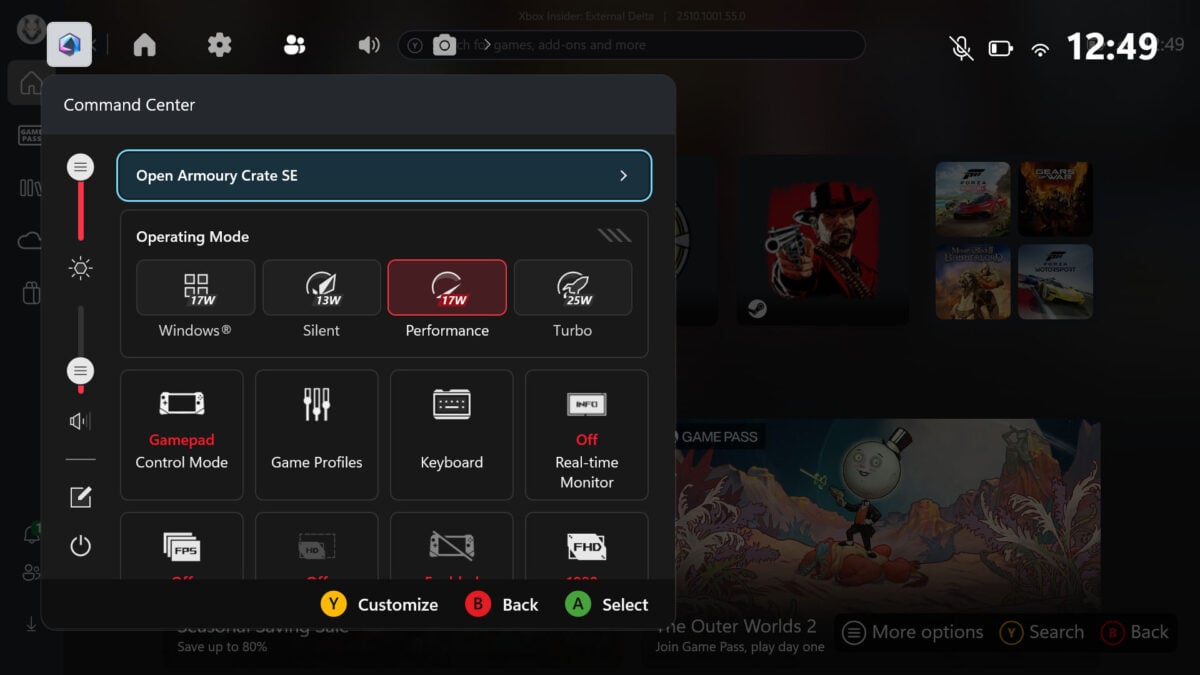
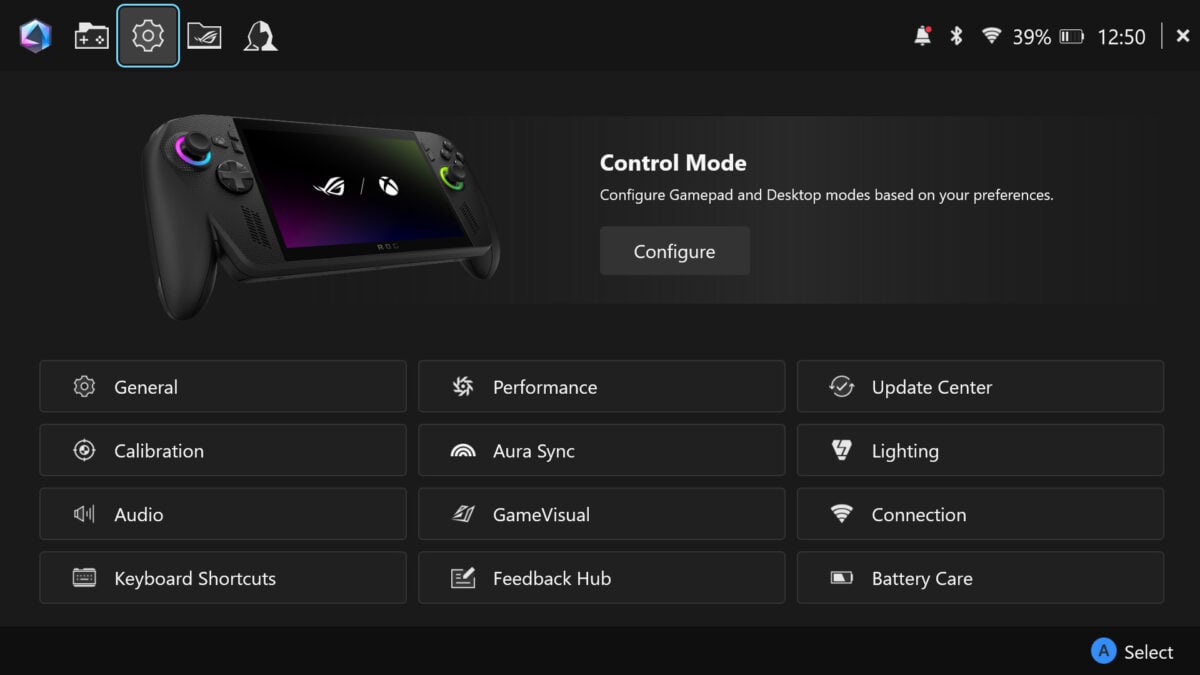
For the moment, this mode is exclusive to ROG Xbox Ally handhelds. However, preview versions of Xbox Full Screen Experience are already working on other devices with official support following suit in the near future.
While you’ll still patch the operating system as you would normally via Windows Update, Asus Armoury Crate SE takes care of everything else. New BIOS, controller firmware, and more come from this app.
The majority of interactions with Armoury Crate stem from its overlay, summoned via the Command Center button. From here, you can quickly toggle between TDPs on the fly, as well as pull up performance trackers and other options.
The suite is appreciably intuitive and responsive, with nary a sign of a bug. Armoury Crate sets the bar for other manufacturers when it comes to handhelds as far as I’m concerned. Kudos to Asus.
Battery
Continuing commonalities with its predecessor, ROG Xbox Ally X features the same 80WHr battery as ROG Ally X. However, time between charges will differ on account of the differences in efficiency between each system’s SoC.
My benchmarks illustrate that Ryzen AI Z2 Extreme running at 25W broadly performs the same as Ryzen Z1 Extreme at 30W. Those 5W may not sound like much, but they translate into a ~17% improvement in performance per watt.
Of course, this comparison only accounts for two specific TDPs. The amount of uptime that you will squeeze out of ROG Xbox Ally X will depend on how much power you’re feeding the APU.
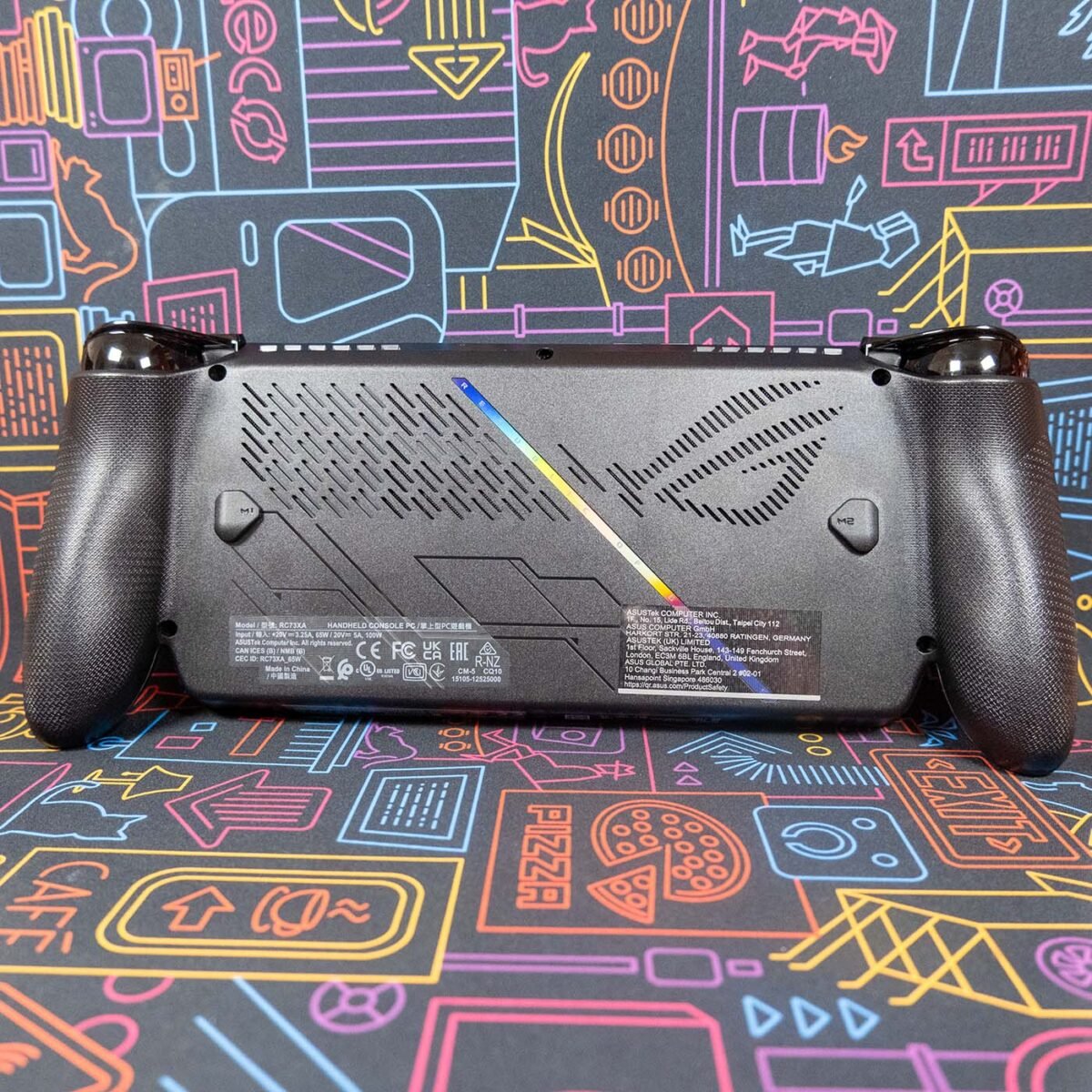
Asus claims “up to 2x” battery life relative to ROG Ally X. I need more time with each system to assess this claim in more detail, but I don’t see this metric panning out in general use.
Speaking broadly for the moment, I haven’t found myself longing for more battery life after extensive multi-hour play sessions. This is a powerful machine that Asus has built with the knowledge gaming is more a marathon than a sprint.
Conclusion
ROG Xbox Ally X isn’t an Xbox, at least not in the traditional sense. Frankly, though, such semantics only distract from the number of more important qualities that make up this formidable handheld gaming PC.
Both hardware and software coalesce in Asus’s device in a manner unprecedented for Windows handhelds. Save hall-effect thumbsticks and perhaps a larger screen, this is as good as systems like this get. Although, this uniqueness is fleeting as other devices will adopt Xbox Full Screen Experience in the near future.
If nothing else ROG Xbox Ally X marks an important step in the evolution of Windows handheld PCs. Microsoft finally has an answer of sorts to SteamOS’ console-like experience, that the company would do well to improve and capitalise on.
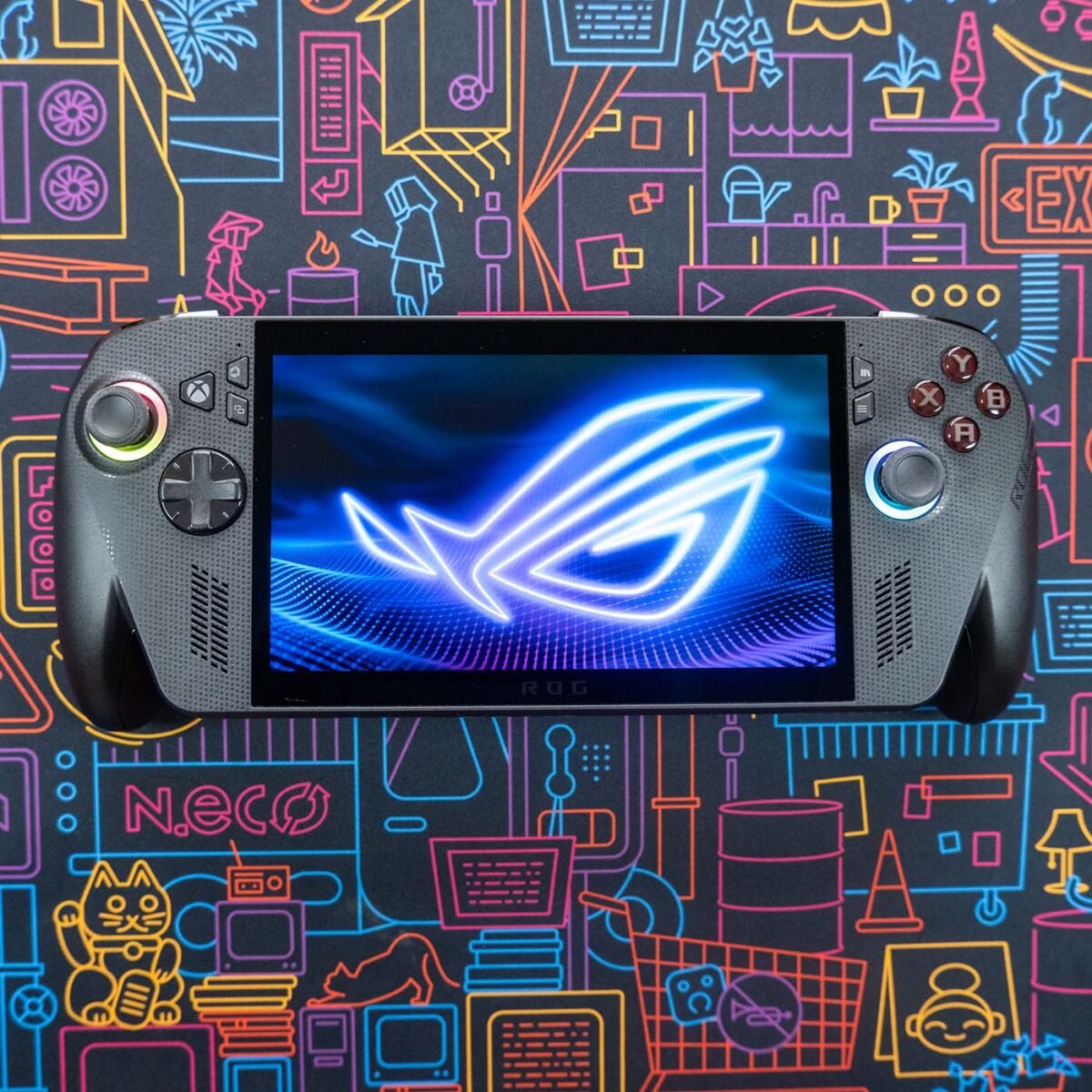
Alternatives to ROG Xbox Ally X with Ryzen AI Z2 Extreme APUs are few, boiling down to MSI Claw A8 and Legion Go 2. Asus’s offering holds the advantage in terms of affordability, even with its steep £800 / $1,000 price point.
Older ROG Ally handhelds will provide bang for your buck but it’s becomingly increasingly difficult to find new stock, leaving you at the mercy of the second-hand market. There’s always Steam Deck, but the value of Valve’s offering is becoming more questionable given its aged hardware.
If you can stomach the cost, purchase ROG Xbox Ally X with confidence.


